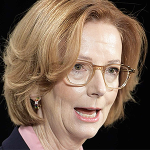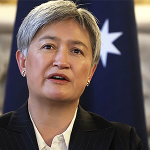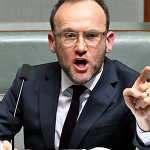The Queensland Budget released this Tuesday marks the beginning of the 2024 state election campaign.
The nine-year-old QLD Labor government is behind in the polls, and are attempting to buy back some support with $1,000 handouts to each household (for electricity), $200 for each child (for sport), $0.50 tickets on public transport, 20 per cent discount on car registration fees, and plenty more.
Many commentators have noticed the cynical timing of these handouts, coming less than six months from the next state election. The government claims they are just listening to the public, who want handouts now.
The real political story is more insidious. Most of the high-profile announcements in the budget are temporary. The most likely outcome is that the LNP win the election, and then next year they are left with the difficult decision of allowing those measures to lapse (and being held responsible for higher rego fees, higher public transport costs, higher electricity costs, etc) or else extending those policies and blowing an irresponsible and unsustainable hole in the budget.
This is bad public policy, but smart Machiavellian political tactics. The best response is to draw attention to what they are doing, so that voters can see through the political trap. The LNP should hold their nerve and allow most of Labor’s 2024 policy extravaganza to lapse. There are a few exceptions, where the LNP should offer to keep the changes and go further:
The cut to car registration fees should be made permanent.
The government announced an increase in the stamp duty concession for first home buyers; fair enough, but there should also be a stamp duty concession for all newly built homes (not just new home buyers) to put downward pressure on home prices. This should be in the form of a tax deduction with a maximum value set to the average QLD house price.
The government has extended the 50 per cent payroll tax rebate for apprenticeships for one year; this should be increased to 100 per cent and made permanent.
The government announced a freeze in fees for one year. This should be made into an ongoing policy where government fees are frozen in every year where real wage growth is negative or stagnant.
The government has made the absurd claim that their ‘cost of living’ measures will put downward pressure on inflation and therefore interest rates. Of course, the RBA will see straight though the smoke and mirrors. Critics have made the contrary claim that the extravagant spending will spark more inflation, but that also is unlikely. The ‘inflation wars’ make for good politics, but the QLD government has little-to-no influence on inflation or interest rates.
As with every state budget, I feel compelled to point out that all the outcomes reported in the mainstream media are misinformation. The government announced that the 2023/24 budget will end with an operating surplus of $0.6 billion, but the more honest fiscal balance (which includes capital spending) remains an unjustifiable deficit of $5.7 billion.
Likewise, the government announced the 2024/25 budget will have an operating deficit of $2.6 billion, but the fiscal deficit will be a more dramatic (and unjustifiable) $10.8 billion.
The fiscal balance remains in deficit in all future years.
These ongoing deficits will drive up state government debt. The government announced that net debt will rise to $60 billion by 2028, while critics have noted that public sector gross debt will rise to $172 billion by the same year. Both statements are true, but neither are helpful – the best measure of debt is ‘general government net financial liabilities’, which will rise from $59 billion this year up to $104 billion by 2028.
It is possible to rack up debt and deficit for good reasons. Unfortunately, that is not what has happened in this budget, with most of the new spending being unnecessary and unproductive.
New government policies have increased non-capital spending by $5 billion in 2024/25 alone. The astute reader will note that this is much more than their $2.6 billion operating deficit. Even if the government made no spending cuts, and went ahead with all the above-mentioned handouts, they still could have easily reported an operating surplus if it wasn’t for their addiction to new spending.
The budget paper lists over 300 policy changes related to spending. Of those changes, literally zero involved a cut to government spending.
Zero.
Are we expected to believe that every current government program is giving value for money, and there are no savings to be found anywhere? And if so, are we then supposed to take seriously the government promise to find future savings?
On the capital side of the budget, the government boasts of continuing to spend more than they have on questionable renewable projects and Olympic stadiums. Not only do these projects run up state debt based on questionable analysis, but they also divert construction resources away from much-needed house building.
The best that can be said about this budget is that it is more interesting than the sleep-inducing federal budget, and there are a few tax cuts. Having said that, most of the tax cuts are temporary, the billions in new spending is mostly permanent and unproductive, the deficits are large and never-ending, and once again serious productivity reform was entirely missing from the conversation.
This budget was a ‘shock and awe’ campaign pitch rather than an economic statement. Judged by economic standards it is irresponsible and short-sighted, but the political judgement will have to wait until October, when we see the verdict of the voters.
Dr John Humphreys is the Chief Economist for the Australian Taxpayers’ Alliance, and was a former Treasury official working in the Budget Policy Division.









